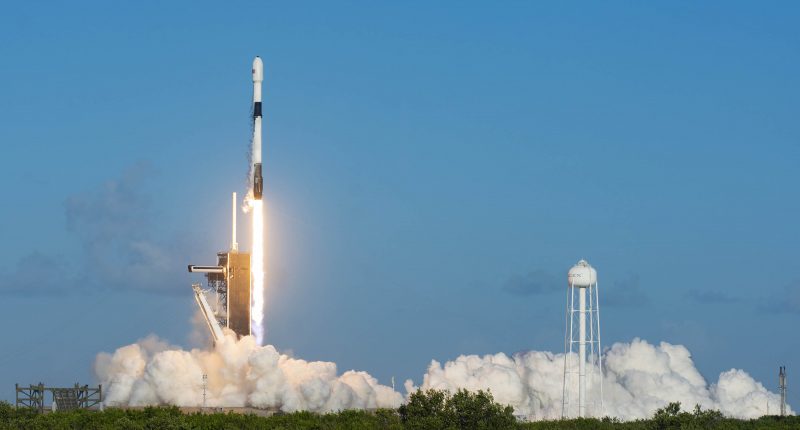SpaceX is hell bent on providing everyone with an acitve internet connection, and has been making satellite launches left and right to achieve this dream. Continuing this saga, the private space organization successfully launched the 14th batch of the Starlink satellites today, which carried 60 low earth orbiting satellites into space.
With this launch, the total number of Starlink satellites in orbit stands at 835 now, including the ones just meant for testing.
The launch took place at the Kennedy Space Center in Florida at 8:25 AM EDT (1225 GMT) using the SpaceX flagship, Falcon 9 booster rocket. The company successfully landed back the first stage booster of the rocket (as if that’s even a surprise anymore) on its recovery drone ship in the Atlantic Ocean called ‘Of Course I Still Love You’, as well as the nose cone fairing halves.
Falcon 9’s first stage has landed on the Of Course I Still Love You droneship pic.twitter.com/mGBLwsC6Gs
— SpaceX (@SpaceX) October 18, 2020
However, there were some hiccups with the retrieval of the fairing halves, as one of these halves broke through the capture nets on the recovery ship. SpaceX expressed that while it was not the outcome they had expected, they are still happy that the crew is fine.
Encountering problems with the retrieval of the fairing halves is not really new, as the company still ‘catches’ these, as opposed to ‘landing’, like with the booster rockets. During the launch of the 13th batch of Starlink satellites, the company was able to capture one of the fairings while the other one just fell into the ocean.
Nonetheless, the mission was a success, and a massive step towards achieving the goal of creating a constellation of internet beacons in the space, that will provide a broadband internet connection to almost every part of the world. The project named Starlink will consist of thousands of satellites in the low earth orbit that will provide satellite internet access in the future. SpaceX also aims to give out these satellites for military, exploratory and scientific purposes as well.
The Elon Musk owned space agency has been pushing really hard this year to get the project ready as soon as possible. It has launched hundreds of Starlink satellites spread across a spree of 12 launches this year alone. The company said it aims to launch 120 satellites (2 launches) every month starting next month and reach the goal of creating satellite broadband as soon as possible. In fact, there is a launch scheduled this Wednesday.
SpaceX has already tested the broadband with its employees and technicians and hopes to put out a public beta at the end of this year with its current pace.
The Tech Portal is published by Blue Box Media Private Limited. Our investors have no influence over our reporting. Read our full Ownership and Funding Disclosure →






